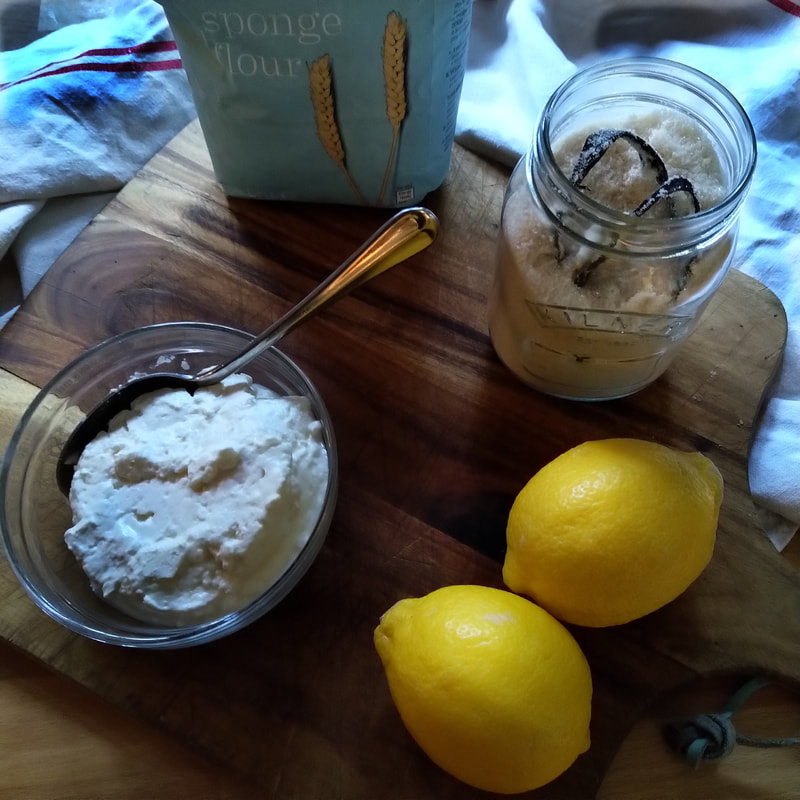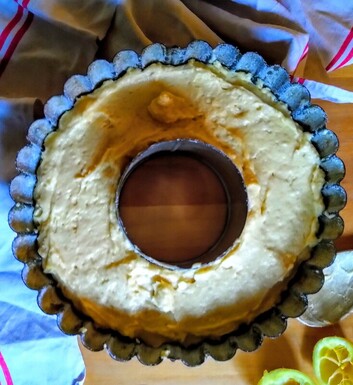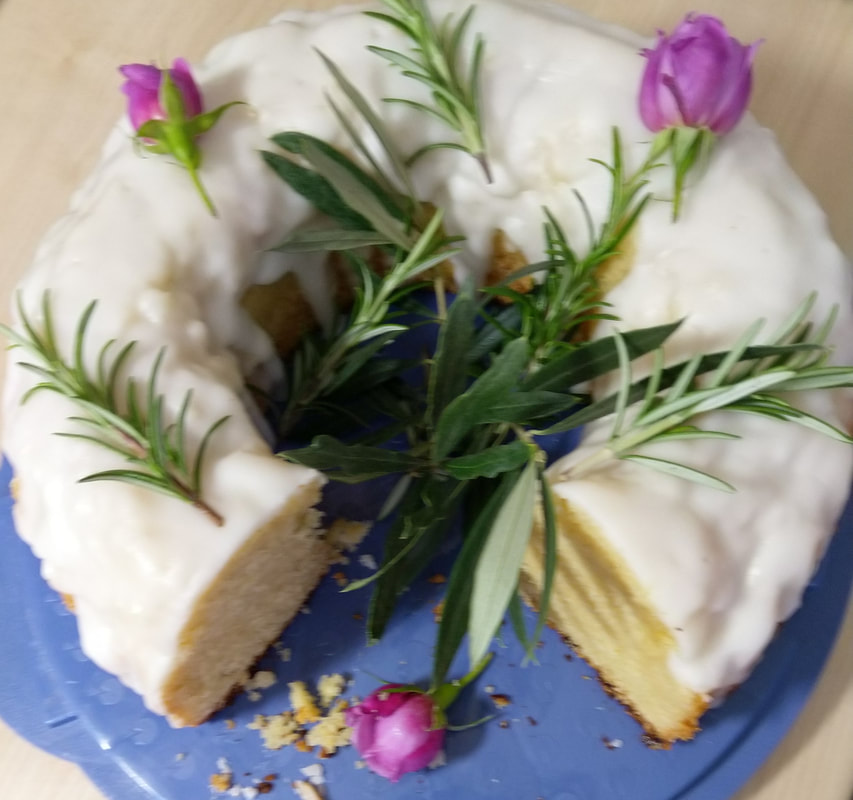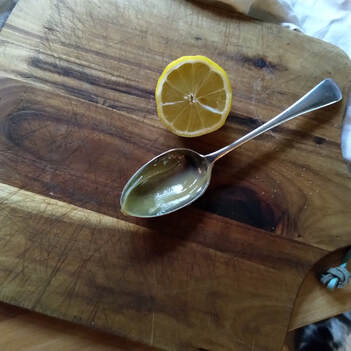|
This cake was created to use the delicious curd cheese I brought back with me from Wildes Cheese after a delightful day spent learning about cheese-making. Philip and Keith run this small urban artisan dairy in Tottenham, North London. On reading about their passion for their craft I knew that this is where I wanted to learn. They say they were drawn to cheesemaking “because it’s pure magic, a form of alchemy”. Now, where have I heard that before?!! The curd cheese’s soft and velvety texture is perfect for making a rich bundt cake, especially paired with the sweet sharpness of lemon. The resulting cake is light and moist, in spite of its characteristically dense crumb. And it’s wickedly moreish!
Method Pre-heat your oven to 170°C. First prepare your bundt tin, by greasing and covering with granulated sugar. Set to one side. Zest two lemons and rub into your caster sugar. Now cream together your softened butter and caster sugar, until light and fluffy. Mix in the curd cheese and crème fraiche. Now split and scrape the seeds from your vanilla pod and stir in together with the lemon juice and ground almonds.
Whilst the cake is baking you can prepare the drizzle. Mix together the juice of one lemon and 50g caster sugar. When your cake is cooked, leave it for about 10 minutes in the tin then turn out onto a wire rack. Using a spoon, drizzle your lemon mix evenly over your cake and leave to cool completely.
|
Our workshops are run by award-winning sourdough baker Helen Underwood.
Categories
All
Archives
November 2023
|






